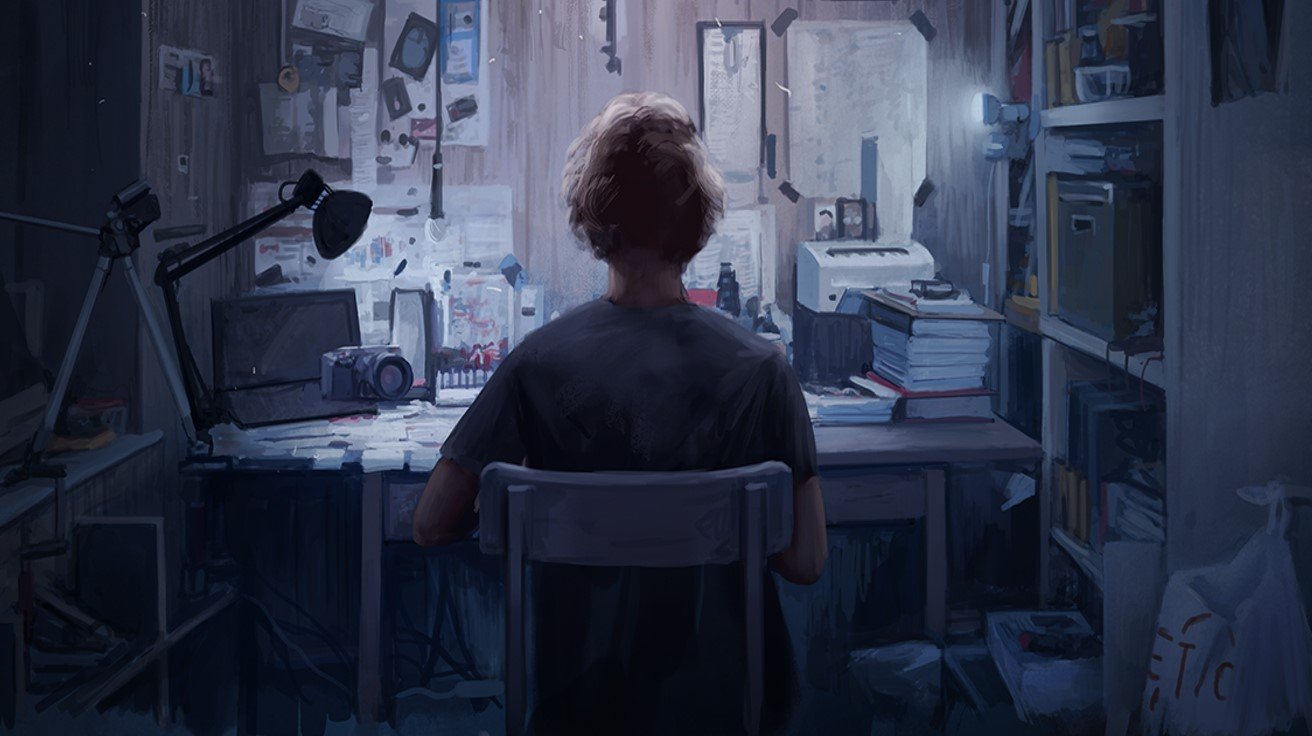Right off the bat, I’m going to tell you that Austrian filmmaker Johannes Grenzfurthner’s Masking Threshold is not going to be for everyone. Its uncompromising presentation and shocking imagery make for a challenging watch. I personally loved its wholly unique vision.
Our lead goes unnamed throughout the proceedings and is referred to as “Protagonist” in the credits. He also goes mostly unseen with Grenzfurthner providing his dialog in voiceover and Ethan Haslam providing his onscreen presence (we never see his face in its entirety). Protagonist is suffering from a strange form of tinnitus, a medical condition wherein one experiences the constant presence of a sound, such as ringing, that has no external cause.
As his case seems to be atypical, he is frustrated by the inability of various doctors to provide relief or explanation. So, he sets up a makeshift lab in his unassuming home outside of Orlando, Florida to conduct experiments. Protagonist is analytical to the extreme, obsessed, and driven to desperation. As he comes closer to possibly discovering the nature of what he’s experiencing, he leaves sanity and morality behind.
Additionally, it’s probably important to know that “masking threshold” is a scientific term referring to the sound pressure level that a sound needs to have in order to become apparent in the presence of another separate sound, known as a “masker.”
All right, so that’s a solid premise, yes? However, Masking Threshold’s true appeal lies in how it’s presented to us. Grenzfurthner and co-writer Samantha Lienhard’s script has a relatively traditional narrative, but it’s wrapped in a sort of mockumentary-style science experiment recording. Think YouTube unboxing clips crossed with arty nature videos. Furthermore, much of what we see is shot in extreme closeup, which has the effect of transforming the mundane into the unsettling. This aesthetic is ratcheted into the realm of horror, both existential and cosmic, as we barrel toward the conclusion. It’s impressive writing in that the character work and story still shine through this layer of engaging but ostentatious artifice.
In addition to being presented as a relentlessly exploratory science experiment, DP Florian Hofer shoots much of the piece in extreme closeup. At first, it’s arty and cool to see objects and story beats presented in this manner, but as we travel down the rabbit hole with Protagonist, we are more unsettled, and eventually, we arrive in the realm of revulsion. I don’t want to discount how powerful and disorienting this technique is, as I have no doubt that some viewers will be unable to handle some of these images. Honestly, though, it’s exemplary work from Hofer.
Now, another note on what we see. The film contains a fair bit of animal death and mutilation, both implied and explicit. According to a disclaimer during the credits, only a single ant was killed during filming. Everything else we see is achieved via effects work. The final leg of the film gets pretty grisly and as a gorehound, I was quite pleased with the effects crew.
Obviously, sound is very important to Masking Threshold. The sound design is impressive and reminiscent of ASMR videos. I also think it’s meant to conjure some sense of misophonia in the viewer. It works hand in hand with the visual philosophy to enhance our discomfort while encouraging us to empathize with Protagonist.
Johannes Grenzfurthner’s Masking Threshold takes what might be considered to be a limited setting and approach and drags us into inescapable madness and horror. Yes, it’s aggressively albeit deceptively arty, but its commitment to this approach pays off for those willing to be swayed by its charms. I found it to be a huge breath of fresh air, though I won’t deny it’s deeply unpleasant in spots. Highly recommended for fans of Microcosmos, Memento, American Psycho, and Sans Soleil.
Michael Cavender




